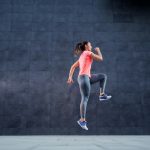Functional Fitness: DIY Workouts to Improve Daily Activities
Functional Exercises and How They Translate to Everyday Activities
Functional exercises are designed to train muscles to work together and prepare them for daily tasks by simulating common movements individuals might do at home, work, or in sports. These exercises help improve balance, coordination, strength, and endurance.
Squats and Their Variants
Squats are fundamental functional exercises that target the thigh, hip, and buttocks muscles. Performing squats strengthens the lower body while supporting the back and core. This mirrors activities like rising from a chair, climbing stairs, and picking up objects from the floor.
Variants such as split squats and goblet squats engage different muscle groups, enhancing mobility and joint stability. Consistent practice of squats helps improve posture and body alignment, which is crucial during everyday movements. Squats can be performed with or without weights, making them accessible for all fitness levels.
The Role of Planks
Planks serve as an essential functional exercise that focuses on the core. A strong core is vital for maintaining balance and stability, impacting how one performs everyday activities like sitting, standing, and carrying heavy bags. Planking engages not only the core but also the shoulders, arms, and glutes.
This exercise helps in keeping the body stable and preventing lower back injuries by improving posture. Mastering planks builds overall strength and endurance without equipment, making it easy to incorporate into any fitness routine. Different plank variations can target specific areas, providing a well-rounded core workout.
Lunges for Lower Body Function
Lunges are key exercises for developing lower body strength and flexibility. They involve movement that stimulates everyday actions, such as walking, climbing, and even getting out of a car. Lunges improve balance and coordination, essential for navigating uneven surfaces or carrying loads.
With variations like reverse lunges and walking lunges, individuals can target different muscle groups, increasing the body’s ability to function efficiently. Lunges also aid in hip flexibility and alignment, which can reduce the risk of injury. Regular practice helps reinforce body mechanics vital for efficient movement.
Deadlifts for Lifting Mechanics
Deadlifts are functional exercises that mimic the action of lifting objects from the ground. This makes them highly effective for improving one’s lifting mechanics in daily life. Deadlifts target the lower back, glutes, hamstrings, and core, providing comprehensive strength-building benefits.
Proper form and technique are crucial to avoid injury, emphasizing the importance of engaging the core. By training with deadlifts, individuals can enhance their ability to lift groceries, luggage, or any heavy object more safely. Variants like Romanian deadlifts can provide additional focus on the hamstrings.
Pushups for Upper Body and Core
Pushups are timeless functional exercises targeting the upper body and core. Engaging the chest, shoulders, triceps, and abdominal muscles, pushups promote strength and endurance. These exercises reflect pushing movements experienced in daily life, such as opening heavy doors or pushing shopping carts.
Regular pushups improve posture and balance, essential for minimizing strain during routine activities. Modifications like knee pushups or elevated pushups can help beginners build strength gradually. Consistently practicing pushups leads to increased muscle tone and enhances functional fitness, equipping individuals to perform daily tasks with ease.
Designing Your Functional Fitness Workout
Functional fitness focuses on exercises that mimic real-life movements to enhance everyday performance. A well-rounded routine should include strength, flexibility, and endurance elements suitable for various fitness levels.
Creating a Balanced Routine
A balanced routine ensures that all major muscle groups receive adequate attention. Typically, routines should include exercises like squats, lunges, and push-ups that engage multiple muscles simultaneously. Including activities that improve flexibility and endurance, such as yoga or cycling, can enhance overall functional capabilities.
By varying workouts throughout the week, individuals can prevent overuse injuries and promote sustained engagement. A mix of cardio, strength training, and flexibility exercises keeps the workout dynamic and beneficial. Paying attention to rest and recovery is crucial for maximizing results and avoiding burnout.



